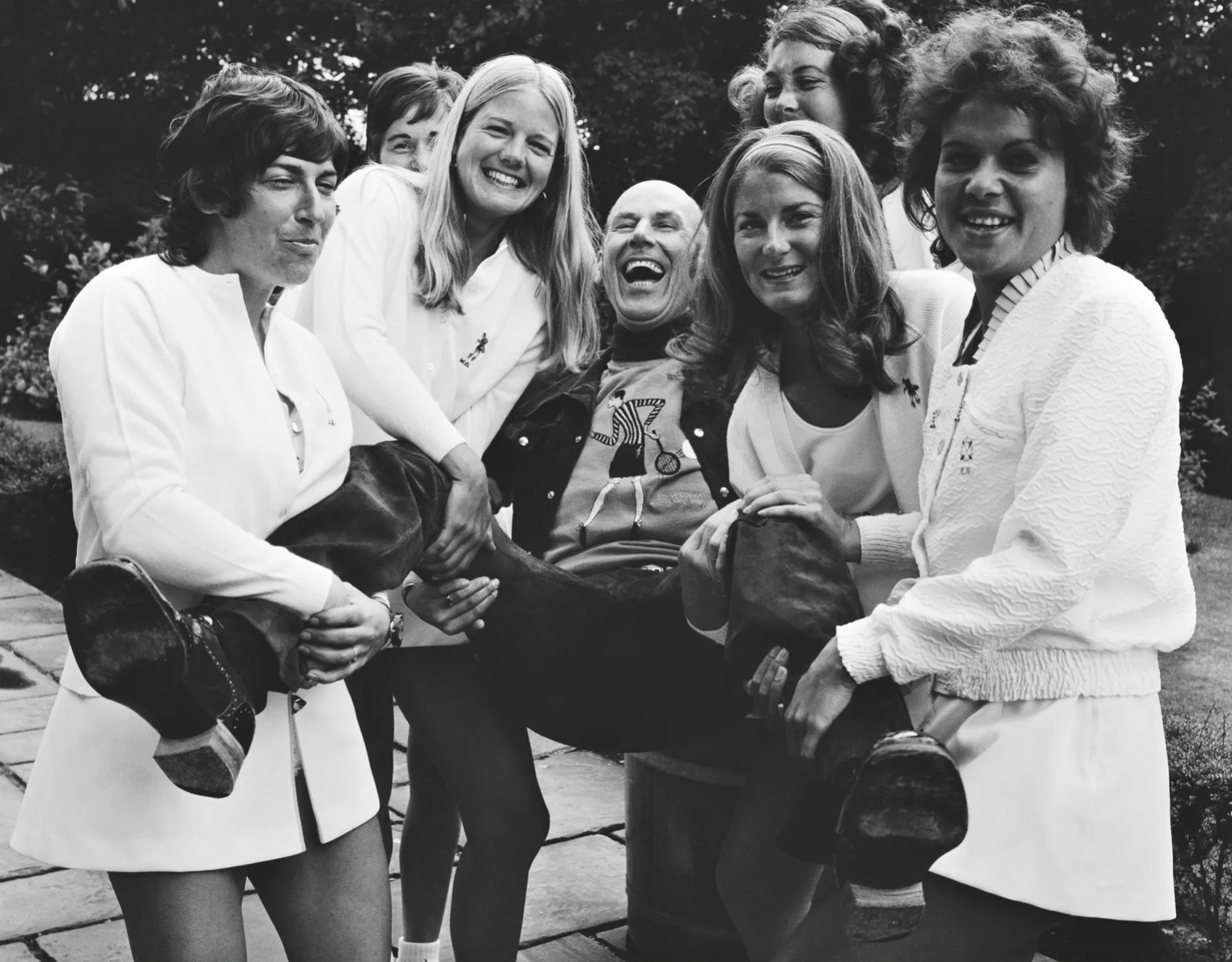At first glance, they seemed like an unlikely pair: a working-class Californian girl next door still in her tennis prime, and the more analytical, more intellectual New York Jewish Stanford grad. But both Billie Jean King and Gladys Heldman, publisher of World Tennis magazine, agreed on one thing: in the sport’s Open era — launched just two years prior — men and women needed to earn equal money. And both had a common frenemy: Jack Kramer, first director of the Association of Tennis Professionals (ATP) and outspoken believer that men deserved more.

Six of The Original 9 show off their International Tennis Hall of Fame rings during a ceremony at the 2022 US Open. From left to right, Julie Heldman, Peaches Bartkowicz, Rosie Casals, Kerry Melville Reid, Valerie Ziegenfuss and Billie Jean King.
Kramer fired the first shot. In August 1970, the pro-turned-promoter announced that the Los Angeles-based tournament he ran, the Pacific Southwest Open, would pay men eight times more than women. Heldman counter-punched by convincing King and her eight cohorts — the Original 9 — to boycott Pacific Southwest for a tournament in her new hometown of Houston, Texas, sponsored by Virginia Slims, a “women’s” cigarette brand launched by Philip Morris in 1968.
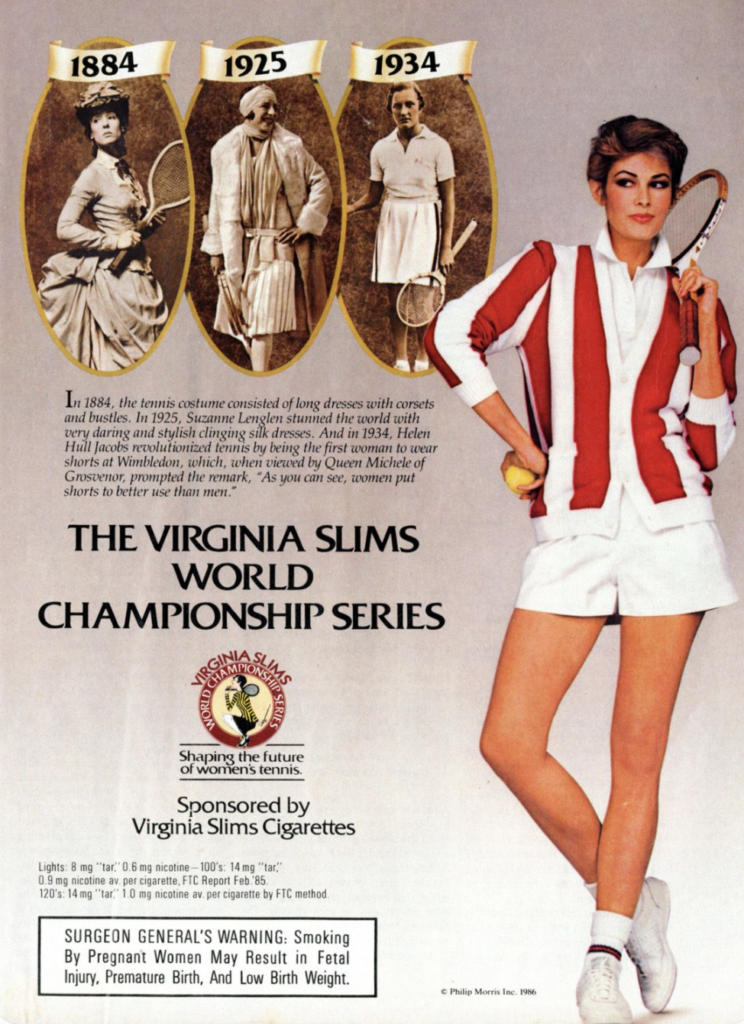
Virginia Slims: A Virginia Slims ad from the mid-1980s. The WTA eventually dropped their original sponsor after smoking created health concerns.
King not only agreed, but convinced eight of her top comrades — Rosie Casals, Nancy Richey, Kristy Pigeon, Valerie Ziegenfuss, Peaches Bartkowicz, Julie Heldman (Gladys’s daughter), as well as Australians Kerry Melville Reid and Judy Tegart Dalton — to defect. At a press conference, the “Original 9” formally signed a pro contract with Heldman’s nascent tour for $1, holding it up for the world to see.
“You’ve heard of women’s lib. This is women’s lob,” a pithy Heldman told the New York Times on the day of the signing. “I hope you will agree that the women are not fighting the USLTA.,” said Mrs. Heldman. “They are just protecting themselves.”
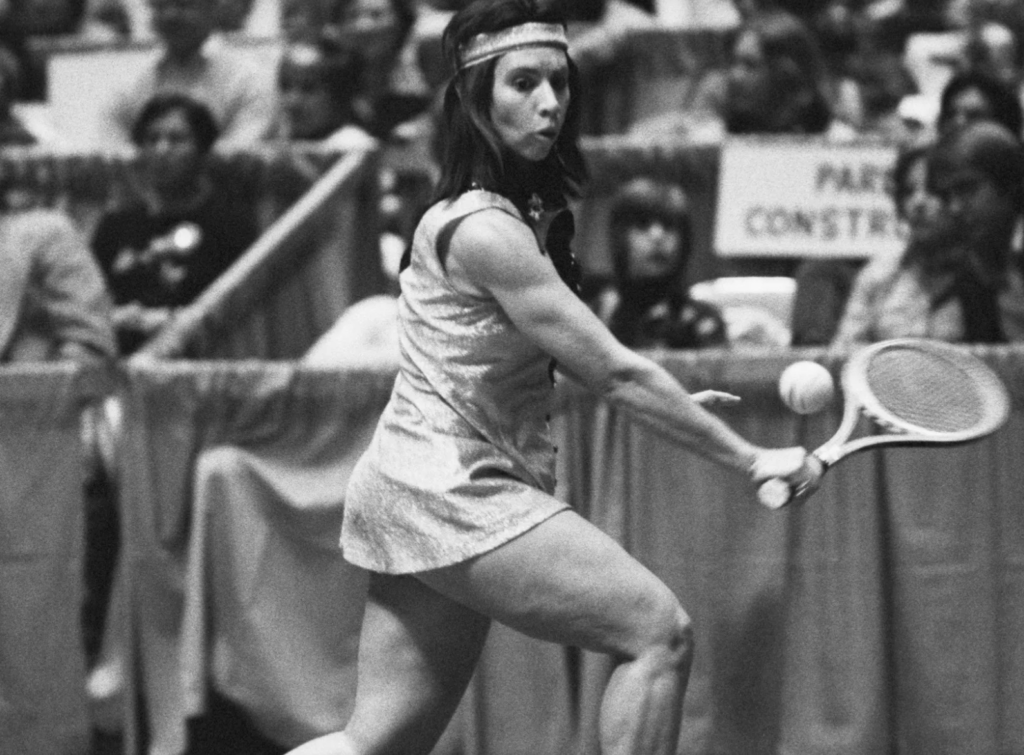
Rosie Casals: Rosie Casals playing in a San Francisco tournament during the first year of the Virginia Slims tour. Casals, who won the first women’s tournament in Houston said of the cigarette company: ““I think we were happy that at least someone payed attention to us and believed in us. If it wasn’t for Virginia Slims, women’s tennis wouldn’t be where it is now.”
Fifty-one years later, six of the Original 9 received a long-overdue thank you during women’s semi-final night at the 2022 US Open. During a special ceremony on Arthur Ashe Stadium Court, they were presented with official International Tennis Hall of Fame (ITHF) rings and sincere praise from former ITHF CEOs Stan Smith — a co-founder of the ATP — and Todd Martin. The Original 9 then hung around to receive praise from Leylah Fernandez as she left the court after her semi-final victory, as well as Emma Raducanu and Maria Sakkari, before their match. Currently, an exhibit, Transcending Tennis: 50 Years of the WTA, is on display at the ITHF and partially online.

Tingling: Four of the Original 9 goofing around with player-turned-fashion-designer Ted Tingling. Tingling, who gained recognition for designing King’s dresses would offer his services designing clothes for the tour.
In hindsight, King didn’t have to start a fuss. After all, when the Open Era began in 1968 — thus eliminating the distinction between amateur and professional matches on tour— she had signed a $40,000 contract to play in the National Tennis League — the first iteration of the ATP/WTA. The other women, however, received $20-25,000 per year, compared to the men’s share of $70,000. It seemed as if the years-long fight to earn prize money had finally ended, but a new battle would pit women players against men in the numbers. For years, Kramer had argued that men’s tennis not only required more stamina — best of five sets compared to best of three — it drew more fans, therefore necessitating a bigger purse for the men.
“I have been tagged an ogre by the girls,” Kramer complained in his 1979 book, The Game: My 40 Years in Tennis. “I’m not a crusader against women’s tennis. I’m just a businessman.
“The only prejudice practised in tennis against women players is by the fans, who have shown repeatedly that they are prejudiced against having to watch women play tennis when they might be able to watch men play.”

Gladys Heldman: Gladys Heldman reading a copy of the magazine she founded, World Tennis. Heldman, a player, was also a mother to pro player, Julie Heldman, a beneficiary of the efforts of the Original 9.
And like a player struggling to stay in a match, Kramer did not give way. He endorsed the USLTA’s (now USTA) threat to suspend the players if they participated in the Heldman-backed professional tournament. He then made it clear that if they played in his, he would remit an under-the-table $7,500 appearance fee. The women did not budge.
“We’re not telling the USLTA to get lost…” King told the Times. “When the USLTA refused to sanction prize money for the Houston tournament and insisted that we play in Los Angeles, where the prize‐money ratio between men and women was 12 to 1, or not play at all, the women stuck together and signed contracts.”
The dust-up played perfectly into the hands of Philip Morris CEO Joe Cullman, who ultimately gave the nascent women’s tour $250,000, along with use of the Virginia Slims name and its slogan “You’ve Come a Long Way, Baby.” By the end of 1970, the Virginia Slims Circuit had boosted its numbers from nine to 40 members. “It is really mind-boggling,” King told the WTA newsletter in 2021.
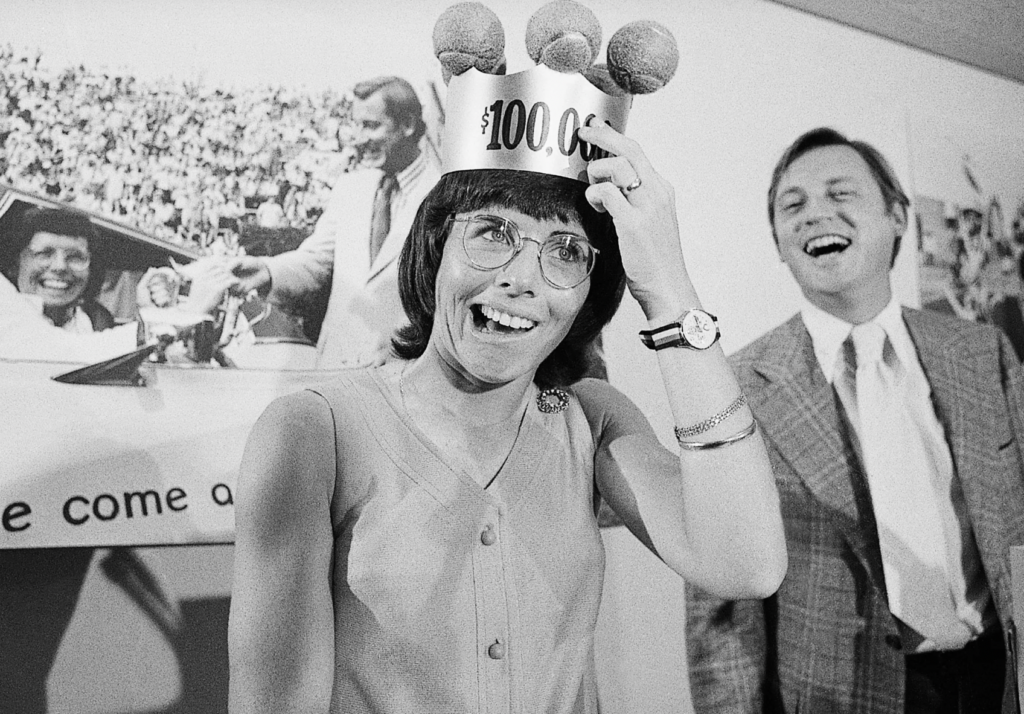
Billie Jean King: Credited with starting the movement for a women’s tour, Billie Jean King wears an appropriate crown in the early 1970s.
“We had no infrastructure, and yet we got all sorts of people — promoters, venues — to take a risk. The reason is because of the title sponsor, because there was some money up there, and that was down to Gladys and her contacts.” In 1973, as King consolidated the all the various tours into the WTA and absorbed the ITF’s Women’s Grand Prix, then took it to 19 US cities — from Las Vegas to Chattanooga, Tennessee — Ban deodorant stepped in to rectify the situation that King once said “stinks” by donating $55,000 in prize money to make the women’s purse at the 1973 US Open equal to the men’s. Virginia Slims, Avon, Colgate, and Toyota then took turns sponsoring WTA tour series from 1971 to 1988.
Now 50 years later, the impact of the Original 9’s revolt in 1970 has impacted women’s sports across the board. Women’s tennis players are some of the highest-paid and most renowned athletes in the world. Following their lead, the U.S. Women’s National Hockey Team threatened to boycott the 2017 International Ice Hockey Federation World Championships, until USA Hockey granted them equal rights. The U.S. Women’s National Soccer Team (USWNT) has cited the Original 9’s premise in court during its dispute with the United States Soccer Federation over gender-bias and pay equality. More and more women are coaches on the sidelines of men’s sports — including 11 female assistant coaches in the NBA — and more women holding executive positions in sports franchises.
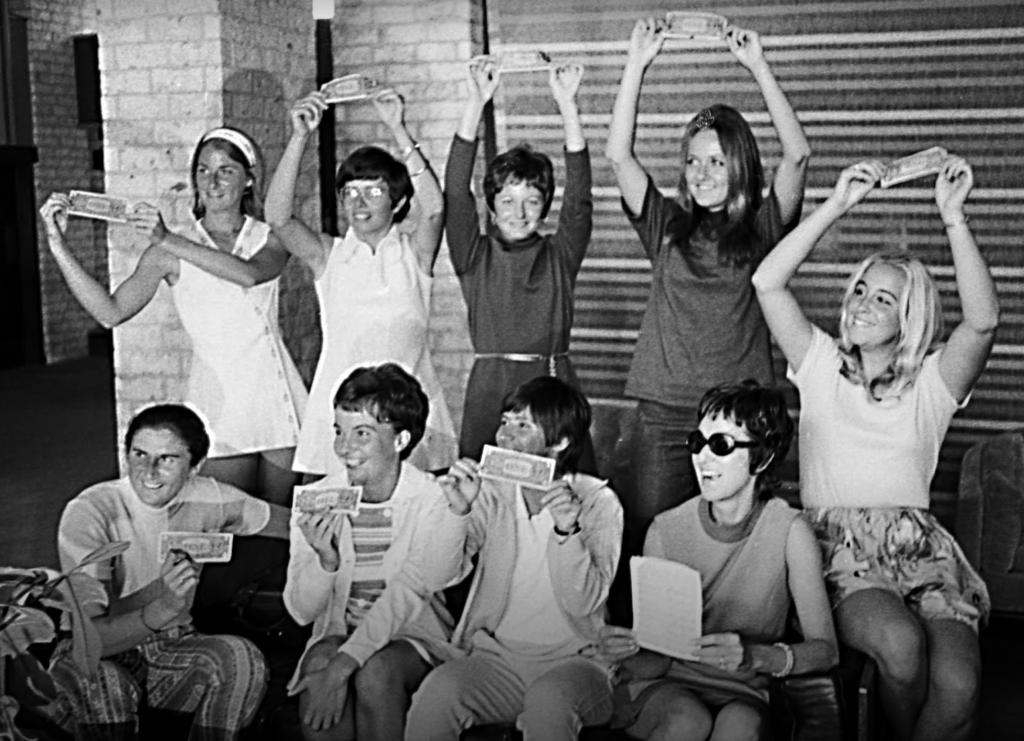
Original 9: The Original 9 sign their contracts with the Virginia Slims Tour in 1970 for $1. Top row, left to right: Valerie Ziegenfuss, Billie Jean King, Nancy Richey, Peaches Bartkowicz, Kristy Pigeon. Bottom row, left to right: Kerry Melville, Judy Dalton, Rosie Casals, and Gladys Heldman.
What would Gladys Heldman say about all this? Before she died of a self-inflicted gunshot wound because of health difficulties, she told the New York Times that “The reason it worked was because the women gave so much of themselves,” said Heldman, who played daily on her own indoor court through her 70s. “They knew they were the game and they inspired others. Billie Jean was incredible, always available for a clinic, a pro-am, an interview. She had the most to give, and she gave it. But everyone gave. The women who lost in early rounds would fly to the next city to beat the publicity drums for the upcoming tournament.”

